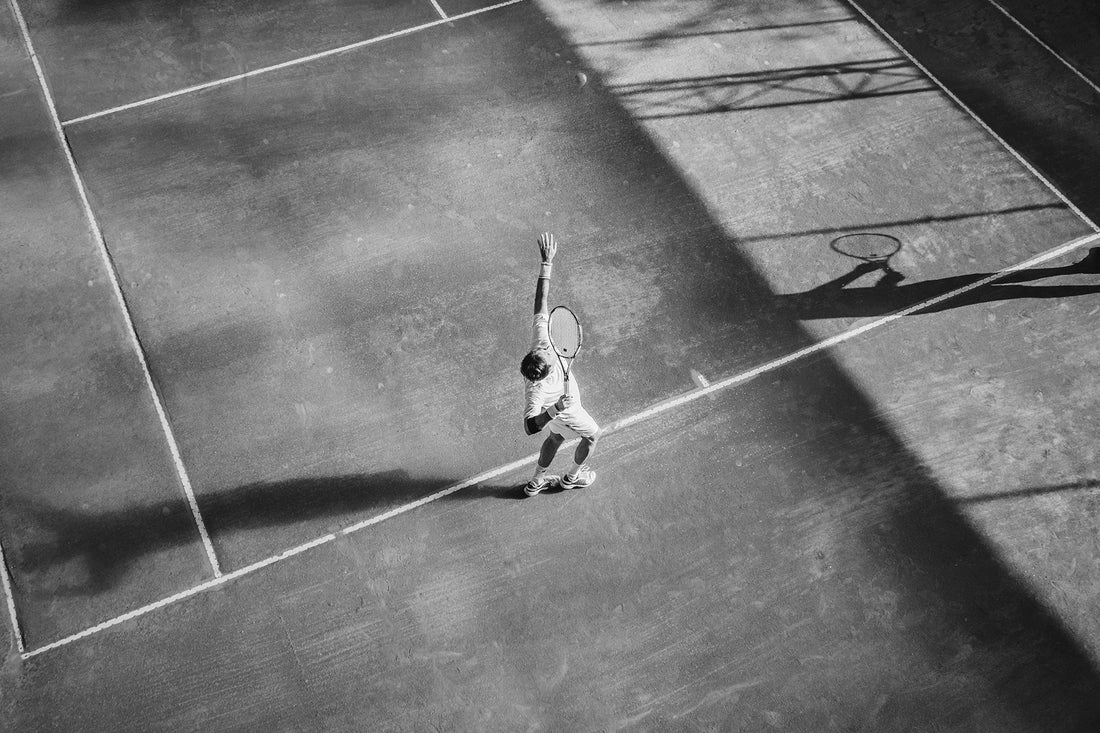Tennis Injuries

More than just “TENNIS ELBOW”…
This time of year is all about Tennis – with the Australian Open and other lead-up events taking our attention as the world stars fill our TV screens in the evening.
The gruelling conditions and the amazing amount of time the players spend on the court can lead to inevitable injury. Tennis injuries are not only seen in the elite field, with recreational and sub-elite players also at risk of injury due to the high speed and size of the racquet, as well as the repetitious nature of the sport. This can lead to injuries in areas such as the shoulder, elbow, wrist, knee, ankle, hip and spine.
Whilst the most known tennis injury is “Tennis Elbow” – the actual incidence of this particular injury now is relatively low compared to some other injury types.
WHAT ARE THE MOST COMMON TENNIS INJURIES?
Due to the amount of movement required around the court, the majority of tennis injuries occur in the lower limb.

Ankle Sprains are common due to the sprinting, stopping, pivoting, jarring and pounding nature of tennis. During a major tournament you will often see the tournament physios being called onto court to attend to a player who has rolled their ankle and getting their ankle taped.
Knee and thigh injuries are also common. Knee injuries can occur when players slip whilst covering the court and potentially can cause ligament damage. Players can also get muscle strains due to the exhaustive, high speed nature of the game – commonly in the Quadriceps, Hamstrings or Calf.
Upper limb injuries mostly occur due to the repetitious nature of tennis, as well as the significant load going through the racquet. This can result in injury to the rotator cuff of the shoulder, and of course “tennis elbow” – which is pain on the outside of the elbow.
The other major area of concern for tennis players is often lower back pain – as suffered by rising Aussie star Nick Kyrgios in the lead-up to the Australian Open.
The rotation required to hit groundstrokes, and the awkward combination of spinal rotation, extension and lateral flexion involved in the serve can lead to pressure on the spinal joints and vertebrae causing stress injuries and disc bulges.
HOW CAN YOU PREVENT TENNIS INJURIES?
The first thing to look at preventing tennis injuries is to ensure that you have a suitable tennis racquet. Use a tennis racquet that is suitable for your style of play, experience and size.
Any player that has suffered from upper limb or shoulder injuries should seek professional advice from an experienced tennis coach when selecting a tennis racquet and choosing string tension.
Checking that the playing surface is suitably maintained to ensure it is in good condition and free of hazards will help to reduce the risk of some lower limb injuries.
Seeking professional advice on your tennis shoes is also important – as the multidirectional requirements of tennis requires more robust shoes than running shoes. Players who have a history of ankle or knee joint injury should also seek professional advice about taping or bracing before play. Your Leading Edge Physiotherapist can help when selecting braces or educating on how to tape an ankle.
WHAT SHOULD YOU DO IF YOU GET INJURED PLAYING TENNIS?
If you suffer from an injury whilst playing tennis, as soon as possible, and for 72 hours after injury, use the RICER method:
-
Rest – Take it easy and only move within your limit of pain.
-
Ice – As soon as possible, and for 20 minutes every two hours, apply ice or a frozen gel pack wrapped in a damp towel. This helps to control bleeding and pain and reduces secondary tissue damage.
-
Compression – Firmly bandage the injury. This helps to control swelling.
-
Elevation – As much as possible, elevate your injury higher than the level of your heart to reduce swelling.
-
Referral – make an appointment with a physiotherapist for diagnosis, advice and ongoing treatment.
Your next step is to have your ankle sprain assessed by a Leading Edge Physiotherapist. You can BOOK ONLINE now, or call one of our clinics here.
